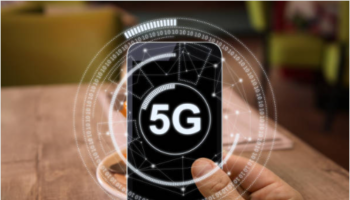External Interference is the rogue menace and one-of-the biggest challenge for telecom networks worldwide. Interference, although not new to telecom world, has taken driving seat in the last couple of years. In a recent survey, conducted by Viavi for APAC Opcos’ (Telecom Operators), over 71{af589cdba9d77786c8c861317dbad60bba1e2ebbf56e2ffab874a1b59fde9ce3} of the participants said that they are experiencing ‘Interference’ in some form to the network, which they believe is the biggest challenge to mitigate in coming years.
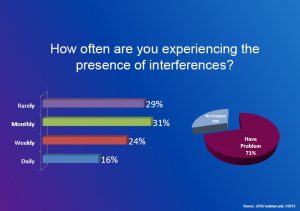
In simple words, Interference can be any rogue radio frequency signal, transmitted from the unknown transmitter, infringing the spectrum of telecom operator. In many instances, these rogue transmitters found to be illegally spilling on Opcos’ frequency bands, in other cases, interference can be originating from far off legitimate transmitters too. With the advent of 4G-LTE networks, which are known to be more sensitive to Interference (than the previous 3G/2G), esp. on the uplink (User to Tower), there is real need to mitigate external Interference.
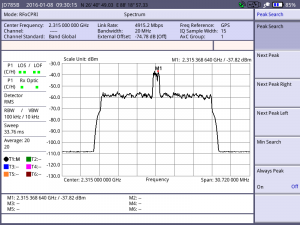
Why Interference Management is critical?
Interference, which infringes telecom operators’ frequencies, frequently results into high call drops, call muting, lower throughput speeds and also impacts other key network KPIs, which leads to degradation of network quality experience for subscribers. So if there is Interference, affecting particular area towers, users residing nearby those towers, would have the bad quality experience of the network, while at other places, where Interference is absent, they would find experience better. This results into inconsistency into the quality of experience (QoE), which typically leads to subscriber churning out and revenue loss for Opcos’.
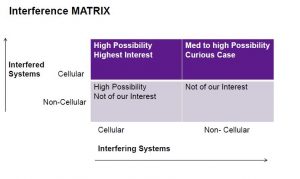
We, at Viavi solutions, believe that Interference challenge would continue to grow in coming years, thanks to LTE/LTE-Advanced network, tower sharing among Opcos, poor quality of components used at the site and insatiable demand for data. Opco doesn’t have any control over their radio environment now, and thanks to increased pressure to improve bottom-line, they would need better solutions to manage Interference and mitigate the impact on subscriber’s QoE. In fact, we also observed that eliminating Interference from the network is impossible, so Opcos worldwide have to resort to managing Interference than eradicating it altogether.
How do Opcos manage Interference?
Viavi Solutions has devised the three-pronged approach to help Opcos mitigate Interference problems. Typically it requires Opco to first understand and quantify Interference problem, then we advise them to deploy better tools in the field to hunt Interfering sources efficiently, and in the end, we help them to build up processes (or workflows) in Interference management to reduce the impact on their networks.
Although it is believed that Opco should know Interference as the challenge, this assumption may be wrong. In our experience, we often work together with Opco central teams to help them unearth Interference issues impacting network KPIs, which also requires a lot of education done at senior and middle management. This could be the time-consuming step, without any assurance, but once done successfully, results are guaranteed. In other cases, Opcos are aware of Interference problem in their networks and are in the advanced stage to solve the problem, which then requires deploying better tools in the field.
What tools are advised to use for Interference Management? Viavi Solutions offers CellAdvisor to detect and locate external Interference source. CellAdvisor, as the name suggests, can be synonymous to old age spectrum analyser, with advanced functions, including RFoCPRI based uplink Interference Detection and Interference Advisor, which is Android tablet based software, helps in the prediction of the location of the Interfering source, automatically. Opcos often use OSS/BSS tools to get the first level indication of Interference in their network and identify sites, critically impacted. CellAdvisor is then deployed to detect and locate Interference in the field.
With the advent of 4G-LTE, typical cell site architecture evolved, where radio units are installed on tower top (close to the antenna) or far-away from baseband units, which are installed at the ground or centralised location (BBU Hotel). Although this evolved architecture provides better downlink-uplink speeds and spectrum efficiency, from Interference detection point of view, this lead to a different challenge. Now if we have to detect Interference, which impacts uplink (user to the antenna) more, we have to send a technician to climb the tower to connect spectrum analyser to antenna ports. This is the dangerous (unsafe), time-consuming and error-prone method of Interference detection and most of the cases lead to failures. Opcos usually spend lots of their OPEX money in sending field teams to site for Interference hunting, but the yield on OPEX is virtually zero or insignificant.
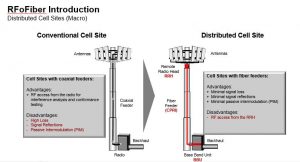
With RFoCPRI Interference detection, CellAdvisor is connected in between Radio unit-Baseband Optical CPRI link, with the help of Optical passive tap at BBU level. This setup is done at either BTS Shelter or Opcos BBU panel, without knowing where Radio unit or Antenna are located. Not only it saves time on sending the technician on tower top to connect spectrum analyser to the antenna (to view uplink), but the process is extremely efficient and accurate. In our experience within few minutes of setup, technicians are able to detect Interfering external signals on uplink precisely. Earlier Opcos had spent days (or even weeks) to get the glimpse of Interfering signal without success, but with the advent of CellAdvisor RFoCPRI, it is guaranteed to detect Interference.
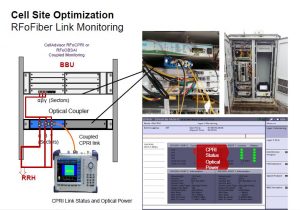
Once the external Interfering signal is detected at the site, next step is to locate the source of the Interfering signal, which requires technicians to drive the identified area with Interference Advisor. Interference Advisor is the Android tablet based solution, which collects spectrum drive data from CellAdvisor (with Car mounted Omni Antenna), then processes it in real-time and predicts the probable location of Interference source, on the Google map in the form of the circular area.
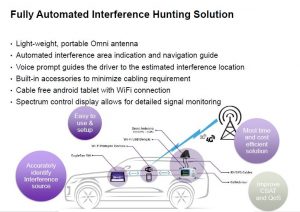
The technician then visits the predicted area and with the help of the directional antenna, connected to CellAdvisor, locates the source quickly on foot. Once Interference source is found, Opcos file complaint to regulator officially (In India it’s known as Annexure 23). Once the claim is filed, the team of experts from spectrum governing arm, visits the site and source location, to confirm the findings and issues notice to source owner to shut down the transmitter.
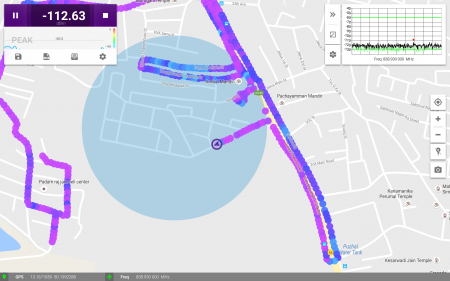
Typically with CellAdvisor and Interference Advisor, it takes 4-5 hours to detect and locate Interference source at the site, although this could vary provided access to the premises and other logistics are in place. Source elimination could take few weeks, depending upon various factors on Opco and regulator side.
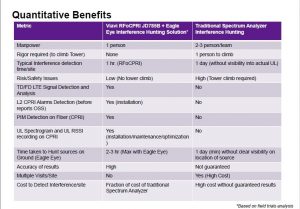
Overall, Viavi’s CellAdvisor and Interference Advisor not only helps to detect and locate Interfering external sources quickly and efficiently but also contributes to improving Quality of Experience (QoE) for Opco subscribers.
(Mr Atul Deshpande is Solution Consultant (Wireless) with Viavi Solutions. All images, technical terms are proprietary of Viavi Solutions Inc)

